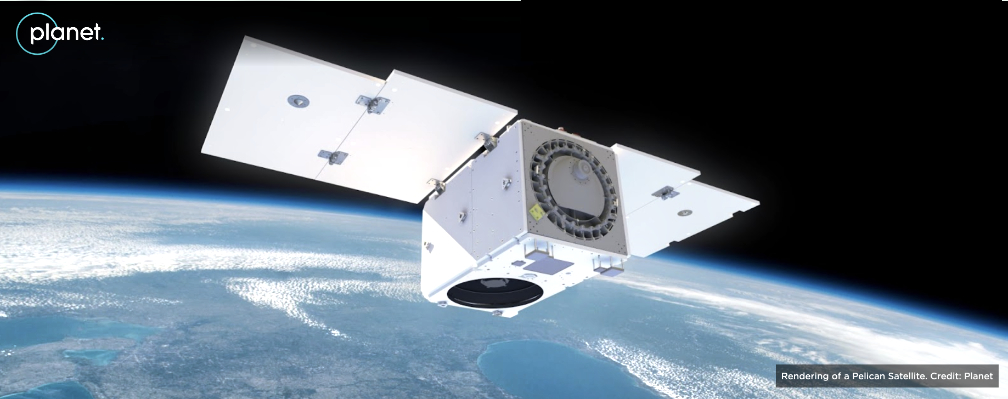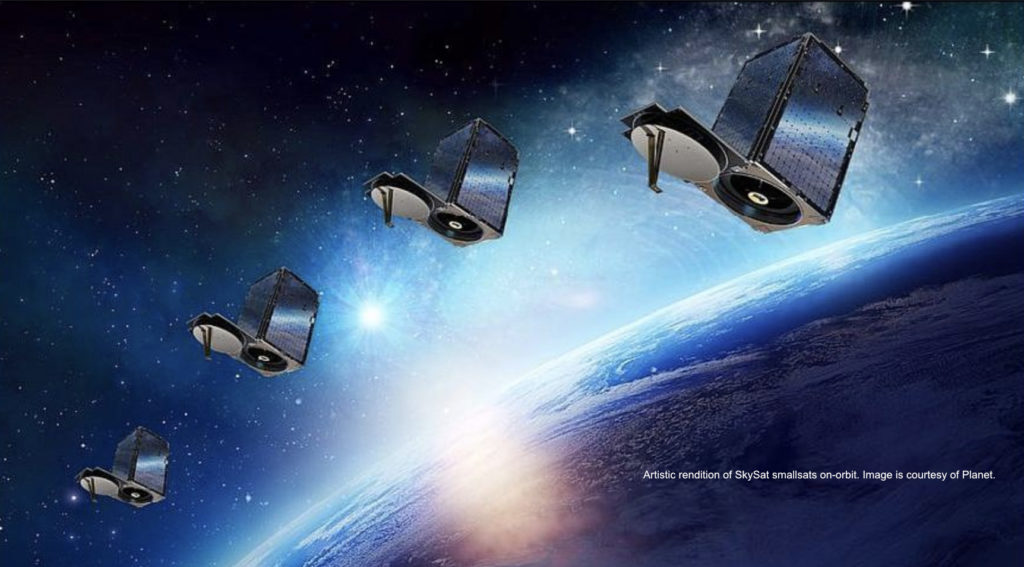
Another exciting day at Planet as the company unveils details about their nex-gen satellite constellation, Pelican, designed to efficiently capture brief and rapidly changing events as they unfold.
The Pelican constellation was designed in-house and is expected to be built at the firm’s manufacturing facility in San Francisco. The advancements of this brand new constellation represent a leap forward in capabilities for the firm’s customers — from higher revisit and higher spatial resolution, to faster data access and delivery.
Pelican is expected to start launch activities early next year and will consist of the following specifications:
- Up to 32 new tasking satellites, which will replenish and improve upon the capabilities of our existing 21 SkySats
- Increased rapid revisit, as customers are expected to be able to task images of the same location up to 12 times per day, and will even have 30 opportunities in mid latitudes
- Reduced latency for downloading data, creating shorter time loops between tasking and receiving data across the world
- Higher resolution capabilities with up to 30 cm. resolution imagery

This next-generation constellation is expected to monitor patterns of life, such as shifting political borders and changing coastlines, and help characterize drivers of environmental change that are threatening protected ecosystems. Planet hopes these exciting product advancements will provide customers across global industries and governments with the ability to respond to global events with more speed and better informed insights.
With such revisit capacity, users should be able to capture transitory events occurring in one location, increasing their likelihood of obtaining a high quality image even during unpredictable or cloudy weather. These new rapid and accurate insights will be particularly valuable for monitoring regions with fleeting events, such as unstable conflict zones or areas vulnerable to storms and fires that spread rapidly over space and time.
The company is currently seeing strong and growing demand from multiple market segments for real-time data from their high-resolution products, including the defense sector for security intelligence, civil government for disaster response and software companies for mapping platforms. Pelican was designed to meet these growing needs as a state-of-the-art rapid revisit and very high resolution satellite system, delivering information faster and more accurately.
Global customers are able to use both of the firm’s satellite system products – the PlanetScope monitoring and SkySat tasking – in combination, to execute tip and cue strategies and design automated alert systems. Thus, Planet designed Pelican to leverage and advance on that interoperability so the company can continue to pioneer unique and comprehensive datasets to answer customers’ questions. Combined with a full suite of daily, global monitoring data and analytics solutions, Pelican believes they will help drive critical decision-making for aid organizations, businesses, international NGOs, and governments.
“We are seeing strong and growing demand from multiple market segments for our high resolution products today. We have designed our next generation ‘Pelican’ fleet to meet the evolving needs of customers who want real-time information about global events as they unfold – from floods and wildfires to political conflicts and threats to human rights. Pelican’s rapid response and higher resolution will do exactly that,” said Planet Co-Founder and CEO, Will Marshall.
